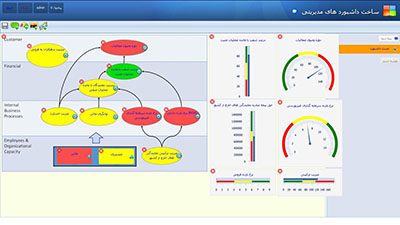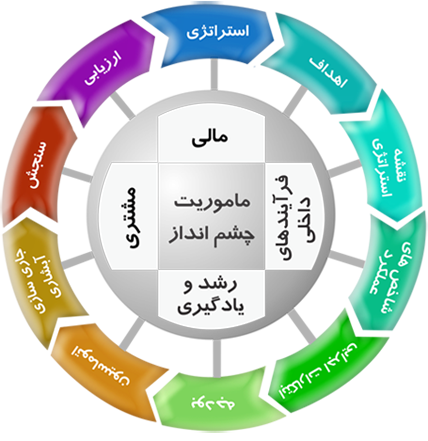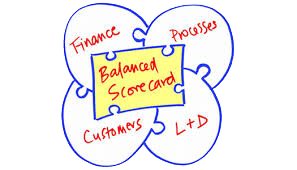
Performance Management System (BSC)

Organization performance evaluation system Consulting / implementation / software

Performance evaluation system with BSC model (balanced scorecard)
The organization's performance evaluation system (generic model)
- Our model caters to organizations that have developed their own goals, indicators, and metrics for performance monitoring, independent of the Balanced Scorecard (BSC) framework. With our module, you can define and monitor the goals and measurable indicators for each organizational unit. These indicators can be summarized to gauge the performance of multiple organizational units based on evaluation indices, aligning with your organization’s hierarchical structure. By establishing the relationship between indicators and their impact weights in key performance indicators, you can trace and measure all the essential performance indicators within your organization. This relationship between goals and indicators makes monitoring the organization’s objectives practical and actionable. Furthermore, you can define and monitor business development plans and projects that directly influence indicator performance. This enables comprehensive evaluation of organizational units, organizations, and companies. For holding companies overseeing multiple subsidiaries, our system facilitates evaluation by monitoring indicators at various organizational unit levels. This empowers managers to exercise control over strategic plans, projects, progress, budgets, and costs within the organization.

Specifications of the functional components of the organization's performance evaluation software
General features of the organization's performance evaluation system software
Key Features of the System:
Flexibility and Dynamism: The system offers flexibility and adaptability during initial setup and definition stages, allowing organizations to tailor it to their specific needs and requirements.
User-Friendly Environment: The system provides a user-friendly and intuitive interface, ensuring ease of use for all users and minimizing the learning curve.
Compliance with BSC Institute Standards: The system adheres to the standards set by the Balanced Scorecard (BSC) Institute, ensuring that organizations can align their performance management practices with industry best practices.
Prohibition in Web Environments: Please note that the system is not designed for use in web environments. It is recommended for internal use within organizational infrastructures.
Customizable Management Alerts: Users have the ability to define and set up management alerts according to their preferences. These alerts can be sent through SMS and email, keeping stakeholders informed of critical updates and events.
For more detailed information about the system, its capabilities, and how it can benefit your organization, please reach out to our dedicated sales department. They will be pleased to assist you and provide further insights tailored to your specific needs.









